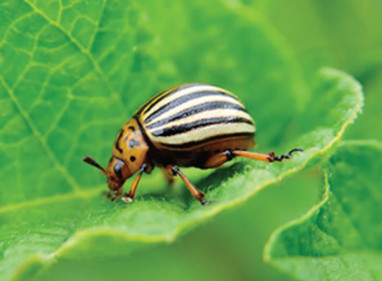




 |
 |
 |
|||
 |
 |
 |
 |
 | |
 |
 |
 | |


| 글로벌 트렌드 | 내서재담기 |


  |
 |  |
현대 의학은 계속해서 큰 발전을 이루고 있다. 하지만 여전히 큰 문제가 남아 있다. 총구 아래에 있는 것과 마찬가지로, 항생제에 대한 박테리아의 저항은 인류에게 큰 위협이 되고 있다. 항생제 내성 세균 methicillinresistant Staphylococcus aureus, MRSA, 약물에 강한 내성을 지닌 임질, 그 외 악몽과도 같은 슈퍼 박테리아의 증가는 세균에 대한 우리의 현시점의 방어를 쓸모없게 만들 수 있다. 우리 최후의 수단이 이러한 병원균을 죽이 지 못한다면 어떤 일이 벌어질까?
--
우리는 암과 우울증에 대한 보다 나은 의약품, 현대적 처방에 의해서도 쉽게 치료할 수 없는 각종 의료 상황에 추가로, 새로운 항생제를 필요로 할 것이다. 지난 수십 년 동안 어떤 산업도 제약 산업보다 더 믿을만한 돈벌이가 되지 못했다. 경기 침체기조차 제약 회사들은 매년 평균 15퍼센트의 수익률을 기록했다. 시장 포화의 위험이 없고, 미국에서는 정부에 의한 가격 억제 가능성도 거의 없다. 거의 모든 규제 완화 제출안이 승인을 얻고 처리 시간은 꾸준히 감소하고 있다. 투자자라면 좋아하지 않을 이유가 없다.
그러나 모든 지배적이고 확대되는 산업은 하나의 유형 혹은 다른 유형의 자원으로 연료를 공급 받는다. 이들 중 일부는 금광과 같이 유형적이고 명백하다. 과정은 비슷하다. 땅에서 발견되는 금덩어리를 단순히 줍기 위한 1차 골드러시가 일어난다. 금덩어리가 채취될 때 광부들은 자갈을 찾고, 다음은 모래를 찾는다. 아직까지도 행운은 남아있지만, 금을 찌꺼기와 분하기 위해 점점 더 많은 자본투자가 필요하다.
오늘날 유전학, 빅 데이터, 인공 지능을 포함하는 새로운 도구들이 신약을 개발하는 데 도움을 주고 있다. 문제는 제약에 필요한 물질을 어디에서 찾을 것인가에 있다.
어떤 이들은 우리가 이미 한계에 도달했다고 주장한다. 물질이 있는 좋은 곳을 아직 찾지 못했다는 의미다. 그러나 영국 리즈대학교Leeds University의 곤충학자이자 연구원인 로스 파이퍼Loss Piper 박사에 따르면 “우리는 아직 시작도 하지 않았다.”라고 했다. 최선의 방법이 우리의 바로 발밑, 즉 곤충의 세계에 있을 수도 있다는 것이다.
“이것은 유용한 화학적 보물일 수 있다. (곤충 이전에) 파충류로부터 어떤 화합물이 추출되었는지 보라.” 최신 〈디스커버 매거진Discover Magazine〉에서 파이퍼 박사는 이렇게 이야기했다. 파이퍼 박사가 가장 좋아하는 사례는 독 도마뱀의 타액에서 추출된 제2형 당뇨병을 치료하는 합성 호르몬 엑세나타이드exenatide다. 2014년~2016년 사이 이 약은 약 25억 달러의 판매고를 올렸다. 누가 도마뱀의 타액에 든 화합물을 보고 제2형 당뇨병에 대한 대히트 약을 생산할 수 있다고 생각했을까!
그런데 또 하나의 기회를 찾았다. 바로 곤충이다. 오늘날, 곤충은 약물 발견을 위한 가장 가능성이 있는 미개척 기회를 제공하고 있다. 곤충과 다른 절지동물은 매우 지저분한 환경에서 쏟아져 나오기 때문에 질병으로부터 자신을 보호해야 하며 이로 인해 수많은 새로운 방어선을 필요로 한다.
소위 ‘곤충 생물자원탐사bioprospecting’는 완전히 새로운 것은 아니지만 새롭게 할 일이 너무나 많다. 예를 들어, 지구에는 약 550만 종의 곤충이 있다. 그러나 발견되고 기록된 곤충은 20퍼센트에 불과하다. 그들을 연구하는 곤충 학자들은 점점 줄어들고 있다. 인간은 수천 년은 아니지만 적어도 수백 년 동안 곤충으로부터 나온 화합물의 의약적 효과에 대해 알고 있었다. 이 화합물에는 항박테리아, 진통제, 항응고제, 이뇨제 및 항류머티스가 포함된다. 한 저널에서 이를 밝힌 바 있는데, 14개의 목目, order, 64종의 다른 절지 동물들이 각 대륙의 다양한 문화 속에서 의료적으로 활용됐다. 지네, 매미 애벌레 껍질, 마비 균류에 감염된 유령 나방 유충 등이 그것이다.
더 최근에 과학자들은 말벌의 독이 암세포를 파괴할 수 있음을, 쉬파리 혈액에서 추출한 펩타이드peptide(두 개 이상의 아미노산 분자로 이뤄지는 화학 물질)인 알로페론alloferon이 항바이러스성 및 항종양성을 가지고 있음을 밝혀냈다.
현재 의약품에 곤충 기반 화합물을 사용하는데 있어 가장 큰 문제 중 하나는 화합물의 양이다. 즉, 우리가 파리와 같이 작은 무언가에서 화학 물질을 발견하면, 그 양이 얼마나 적겠는가! 그러나 파이퍼 박사는 이에 대한 해결책을 말한다.
“이전에는 특정 종으로부터 충분한 양을 발견하지 못해 매우 제한적이었을 것이다. 충분한 양을 추출하려면 수천 마리가 필요했을 수도 있다. 그러나 전사체학transcriptomics, 轉寫體學에서의 획기적인 발견, 크리스퍼CRISPR/Cas9 유전자가위 기술의 진보를 통해 특정 유전자를 분리하여 대량 생산할 미생물의 세포주에 삽입할 수 있다. 또한 귀뚜라미나 딱정벌레와 같이 큰 곤충에 희귀한 유전 물질을 삽입하여 추출하는 방식으로 대량 생산도 가능하다.” 곤충 학자이자 올씽스 벅스All Things Bugs의 설립자 아론 도세이Aaron Dossey는 “우리는 곤충에 백신 유전자를 넣을 수 있다. 그런 다음 백신, 선택 가능한 약물 또는 효소 또는 생체 활성 펩타이드 또는 일부 비타민을 대량 생산하는 수단으로 사용할 수 있다.”라고 말했다.
아론 도세이는 특히 크기가 크고, 광범위한 화학적 방어를 하는 대벌레stick insect가 생합성 연구를 위한 매력적인 모델 유기체가 될 것이라고 주장한다. 분석된 대벌레 종의 수, 지금까지 발견된 새로운 화합물의 수, 그리고 이러한 목에 속하는 종의 전체 수를 고려하면, 대벌레가 새로운 화합물의 유의미한 잠재적 원천이라는 것이다.
의약품을 위한 분석에 가장 유망한 다른 곤충으로는 벌, 말벌, 개미와 같은 사회적 곤충이 있다. 작고 밀집된 거주 구역에서 높은 유전적 관련성을 가진 수억 마리의 일개미를 품고 있는 개미탑은 질병 발병에 있어 완벽한 장소다. 한 개체가 감염되면, 불과 수 시간 만에 수천 마리에게 그것을 전파할 수 있다. 토양은 지구상에서 가장 미생물 밀도가 높고 다양한 서식지다. 따라서 개미에게는 강력한 항균제가 필요하다. 즉, 수많은 종이 강력한 항생제를 그들 등의 후늑막 분비선metapleural gland에서 분비한다.
2018년 2월, 〈로열 소사이어티 오픈 사이언스Royal Society Open Science〉 저널에 발표된 애리조나주립대학교 클라크 피니크Clark Pinick 교수의 연구는 일반적으로 양성이며 피부에 사는 박테리아 표피포도알균Staphylococcus epidermidis에 저항하는 20종 개미들의 항균력을 테스트했다. 클라크 교수는 개미 하위 과family, 科의 주요 3종을 모은 것이었다. 테스트를 거친 개미의 60퍼센트는 박테리아 번식을 억제했고, 가장 크기가 작은 개미 중 한 마리가 가장 강력한 항균성을 보였다.
곤충을 통한 의약품 제조에 있어 도전 과제 중 하나는 연구실이 아닌 자연 환경에서 곤충을 화학적으로 연구하는 것이다. 수많은 곤충이 특정 조건에서 자란 특정 식물을 먹고 특정 화합물을 합성할 수 있도록 해야 하기 때문이다. 그래서 곤충학자 로스 파이퍼는 곤충을 기반으로 한 화학 물질로부터 최대한의 이익을 얻으려면 곤충 서식지를 보존해야 한다고 주장하고 있다.
각종 연구 결과와 전문가의 의견을 통해 우리는 다음과 같은 3가지를 예측할 수 있다.
첫째, 이 분야의 발전은 곤충학자의 부족으로 인해 제한될 것이다. 다른 많은 전문 분야와 마찬가지로 스킬 갭skill-gap이 실제적인 결과를 가져오기 때문에, 곤충학자의 부족은 이 분야의 발전에 악영향을 끼칠 것이다.
그러나 다행스럽게도 정보 기술과 교차 교육을 결합함으로써 제약 산업은 향후 10년간 이러한 격차를 해소할 수 있다. 더불어 채용 옵션이 확대되면, 수많은 생물학과 학생들이 곤충학에 초점을 맞추게 될 것이다.
둘째로, 550만 종의 곤충 종에서 추출된 수많은 종류의 화합물들이 최첨단 디지털 도구에 의해 처리될 수 있을 것이다.
자동화된 ‘로봇 실험실’을 통해 소수의 기술자들이 수만 가지의 실험을 오류 없이 동시에 실행하고 모니터링할 수 있다. 현대의 게놈 및 프로테오믹스 기술은 게놈과 단백질의 신속하고 저렴한 시퀀싱sequencing을 가능하게 하고 있다. 바디온어칩Body-on-a-chip 기술은 독성 및 기타 부작용에 대한 전임상 검사pre-clinical test를 획기적으로 가속화할 것이다. 또한 인공지능 기반 시스템은 화학 건초 더미에서 가장 유망한 ‘바늘’을 식별하는 데 큰 도움이 될 것이다.
셋째, 2030년까지 새로운 차원의 곤충 추출 치료제가 출시되거나 임상시험을 마칠 것이다. 이들 화합물 중 다수는 기존 의약품의 안전하고 효과적인 대체품이 될 것이다.
여기에는 오늘날의 슈퍼 박테리아에 저항하는 새로운 항생제도 포함된다. 그 외는 지금까지 치료할 수 없는 질병을 다루게 될 것이다.
* *
References List :
1. Troy Farah. DiscoverMagazine.com, April 13, 2018. Drugs from Bugs: Bioprospecting Insects to Fight Superbugs.
http://blogs.discovermagazine.com/crux/2018/04/13/drugs-insects-antibiotics-superbugs/
2. Drew Smith. Undark.org, January 2, 2018. We Have Reached Peak Pharma. There’s Nowhere to Go But Down.
https://undark.org/article/peak-pharma-drug-discovery/
3. Eraldo Medeiros Costa-Neto. Journal of Ethnobiology, 2005. Entomotherapy, or the Medicinal Use of Insects.
http://www.bioone.org/doi/abs/10.2993/0278-0771(2005)25%5B93:EOTMUO%5D2.0.CO%3B2
 |  |
Crawling Toward Breakthrough Treatments
Modern medicine continues to make enormous progress, but big challenges still lie ahead.
Somewhat like looking down the barrel of a gun, antibiotic resistance is a looming threat. The rise of MRSA, super drug-resistant gonorrhea and other “nightmare” bacteria may render our microscopic defenses useless. So, what are we going to do when your last resort fails to kill these pathogens?
We’re going to need new antibiotics, in addition to better medicines for cancer, depression, and other conditions that aren’t readily treatable by current prescriptions.
FOR DECADES, no industry has been a more reliable moneymaker than pharmaceuticals. Immune to recession, drug companies regularly score 15 percent profit margins year-after-year. There is no danger of market saturation and, in the U.S., little prospect of government restraint of prices. Nearly all regulatory submissions win approval, and turnaround times are steadily decreasing. If you are an investor, what’s not to like?
But all dominant and expanding industries are fueled by resources of one type or another. Some of these are tangible and obvious, like gold deposits. Their exploitation follows a familiar arc. There is an initial rush to simply pick nuggets up off the ground. When the nuggets have been picked, miners must search for pebbles, then sand, then dust. There are still fortunes to be made, but more and more capital investment is needed to separate the gold from the dross.
As we have previously discussed in Trends, there are several emerging tools involving genomics, big data and artificial intelligence, that will help us discover drugs. The question is where do we look for these molecules.
Some argue that we’ve reached “peak pharma,” that is, we’ve run out of good places to look. But, according to Dr. Ross Piper, an entomologist and research fellow at Britain’s University of Leeds, “we haven’t even begun looking.” And, our best bet may be beneath our feet, in the diminutive world of insects.
“It could be a treasure trove of useful chemistry. Look at what compounds have been isolated from reptiles,” Piper said in a recent Discover magazine article. His favorite example is exenatide, a synthetic hormone that treats type 2 diabetes, which was originally derived from the saliva of Gila monsters. Between 2014 and 2016, sales of this drug reached $2.5 billion. “Who would have thought just by looking at the compounds in the saliva of a lizard that you can produce a blockbuster drug for type 2 diabetes?”
Today, insects offer perhaps the most promising untapped opportunity for drug discovery. Because insects and other arthropods are awash in a very dirty world, thay need to protect themselves from disease, and have many novel defenses.
While so-called “insect bioprospecting,” is not entirely new, there’s much to be done. For instance, there are an estimated 5.5. million different insect species on earth, but only around 20 percent have been described. However, entomologists investigating them are becoming scarce.
Humans have known about the medicinal benefits of compounds derived from insects for hundreds if not thousands, of years. These compounds include anti-bacterials, analgesics, anticoagulants, diuretics and anti-rheumatics.
In a 2005 review, Eraldo Costa-Neto identified 64 different arthropod species from around 14 orders, being used medicinally by different cultures across five continents. In traditional Korean medicine alone, there are at least 19 insects and other arthropods commonly prescribed, including:
? centipedes,
? cicada nymphal skins, and
? ghost moth larvae infected with the paralyzing fungus Ophiocordyceps sinensis.
More recently, scientists found that wasp venom can explode cancer cells while alloferon, a peptide isolated from the blood of a species of blow fly, has antiviral and antitumor properties.
In order to use insect-based compounds in pharmaceuticals one of the biggest problems is scaling. Once you find a chemical in something as tiny as a fly, how do you make sure you can make enough of it?
“Previously, you would have been restricted by not being able to find sufficient quantity of that particular species,” Piper says. “You maybe needed thousands of them to be able to extract enough of whatever.” But with breakthroughs in transcriptomics and advances in CRISPR-Cas9 technology, we can isolate certain genes and insert them into the cell line of a microorganism that will mass-produce it.
Alternatively, you could insert rare genetic material into large common insects, such as crickets or mealworms, and mass-produce medicine this way. Aaron Dossey, an entomologist and the founder of All Things Bugs says, “You could put vaccine genes into insects. Then use them as a mass production vehicle for your vaccine, your possible drug of choice or enzyme or bioactive peptide or some vitamin.”
Dossey suggests in a 2010 analysis that “stick insects.” or phasmids. will particularly make “attractive model organisms for biosynthesis studies” due their large size and wide range of chemical defenses.” He also observes that, “Given the number of phasmid species analyzed…the number of novel compounds found in phasmids so far, and the total number of species in this order, phasmids represent a significant potential source of new compounds.”
Among the other most promising insects to analyze for drugs are social insects, especially bees, wasps and ants. An anthill, which can contain hundreds of millions of workers with high genetic relatedness in compact, clustered living quarters, is the perfect place for a disease outbreak. If one individual gets infected, a worker could spread it to thousands of individuals within a few hours. Soil is by far the most microbially dense and diverse habitat on the planet. Therefore, ants need strong antimicrobials, which many species secrete from the metapleural glands on their back.
Research by Arizona State University Professor Clark Pinick, published in the journal Royal Society Open Science in February 2018, tested the antimicrobial strength of 20 different ant species against Staphylococcus epidermidis, a common, generally benign, skin-dwelling bacteria. He collected ants is all three of the major ant sub-families. Sixty percent of the ants tested inhibited bacterial growth and one of the smallest ants tested displayed the strongest antimicrobial properties.
One of the challenges is to chemically study insects in their native environments rather than in the lab. Why? Many bugs rely on eating specific plants grown in specific conditions to enable them to synthesize certain compounds. Entomologist Ross Piper insists that if we’re going to get maximum benefit from insect-based chemical compounds, we’ll need preserve their natural habitats.
Given this promising trend, we offer the following forecasts for your consideration.
First, progress in this field will be limited by a shortage of entomologists.
As in so many specialties, the skills-gap has real-world consequences. Fortunately, combining information technology with cross-training should enable the pharmaceutical industry to fill this gap over the coming decade. And, once career options expand, many biology-oriented undergraduates will redirect their focus toward entomology.
Second, the extremely large volume of compounds potentially derived from 5.5 million insect species will be addressed by state-of-the-art digital drug discovery tools.
Automated “robot laboratories” will permit a handful of technicians to run and monitor tens of thousands of controlled, error-free experiments, simultaneously. Modern genomics and proteomics technology permits the rapid, low-cost sequencing of genomes and proteins. Body-on-a-chip technology will dramatically accelerate pre-clinical tests for toxicity and other side-effects. And AI-based systems will help identify the most promising “needles in the chemical haystack.” And,
Third, by 2030 a whole new generation of insect-derived treatments will be entering the market or finishing clinical trials.
Many of these compounds will be safer and more effective replacements for existing pharmaceuticals. This will include antibiotics that work against today’s superbugs. The rest will address conditions and ailments that have, until now, been untreatable.
References
1. Troy Farah. DiscoverMagazine.com, April 13, 2018. Drugs from Bugs: Bioprospecting Insects to Fight Superbugs.
http://blogs.discovermagazine.com/crux/2018/04/13/drugs-insects-antibiotics-superbugs/
2. Drew Smith. Undark.org, January 2, 2018. We Have Reached Peak Pharma. There’s Nowhere to Go But Down.
https://undark.org/article/peak-pharma-drug-discovery/
3. Eraldo Medeiros Costa-Neto. Journal of Ethnobiology, 2005. Entomotherapy, or the Medicinal Use of Insects.
http://www.bioone.org/doi/abs/10.2993/0278-0771(2005)25%5B93:EOTMUO%5D2.0.CO%3B2
